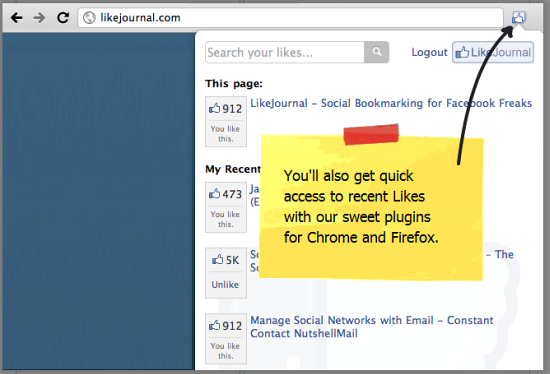The Facebook Like button is the web equivalent of nodding your head in approval. It’s the new way to tell the world that you like this website or this story or this person or this picture. When you ‘like’ something on a website or when you click ‘Like’ under someone’s comment that information is posted on your Facebook page and appear on your friends’ stream.
Facebook has made it pretty simple for website owners to add the Like button to their websites so that you see them virtually everywhere you go. As a Facebook user you must have clicked on a few dozen to a few hundreds of those buttons. But where are all those stories and comments you liked?
Unfortunately, it is not easy to keep track of your likes. They appear for a short time in your activity stream but soon get replaced by newer likes.

This is where LikeJournal comes in. It is a new free service that collects all your Likes and puts them together on one page. LikeJournal will access your Facebook account and retrieve all the things that you have liked and then present them to you through your LikeJournal account. You will be able to see all that you have liked in the past, and even share what you have liked with your friends. What’s more, it is fully searchable.
If you install LikeJournal’s Firefox and Chrome extension, you can access your LikeJournal account, and hence all your Likes, right from your browser’s toolbar.
With LikeJournal you may even start using Facebook as a social bookmarking service like Delicious. Want to save something for future? Click on the Like button and get back to it later through your LikeJournal account or through the browser pop-up panel.
Now that’s an interesting idea. What do you say?

Comments
Post a Comment